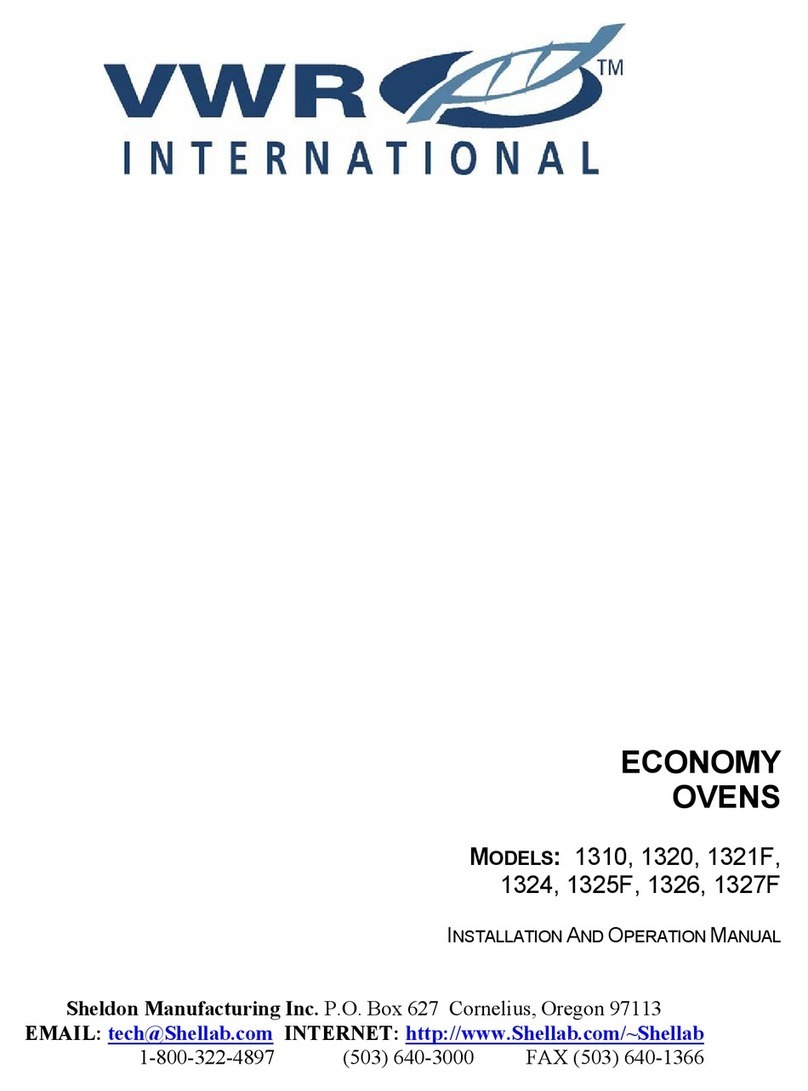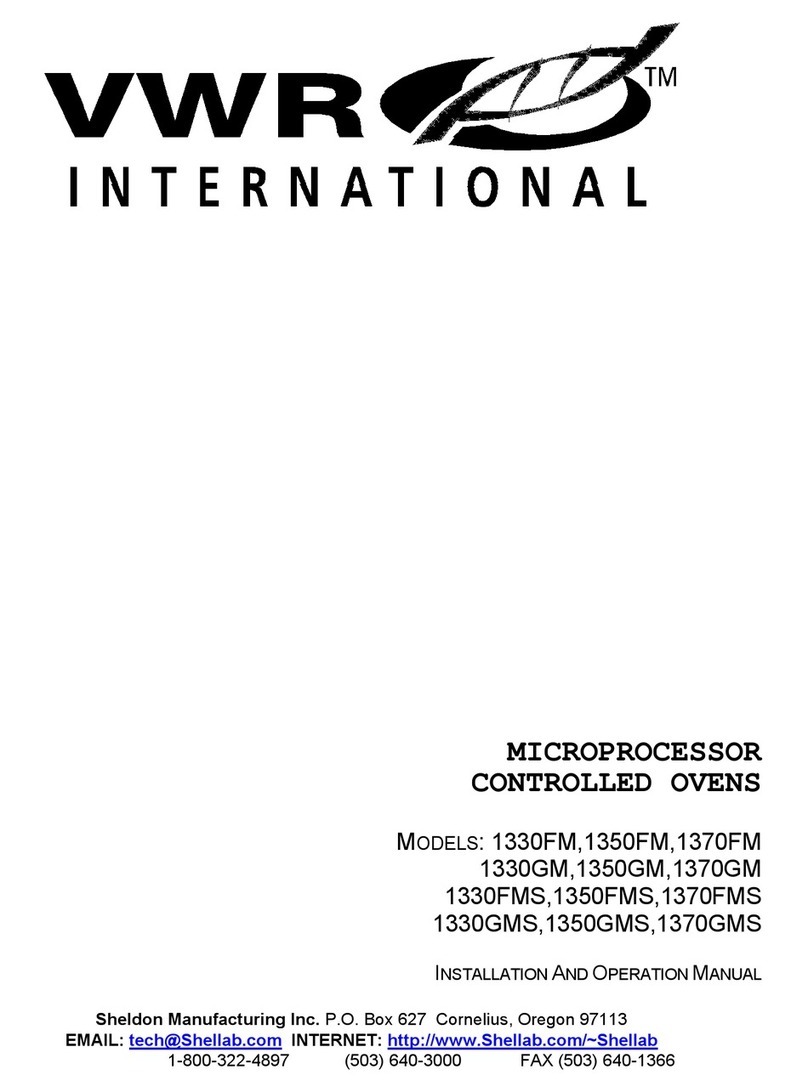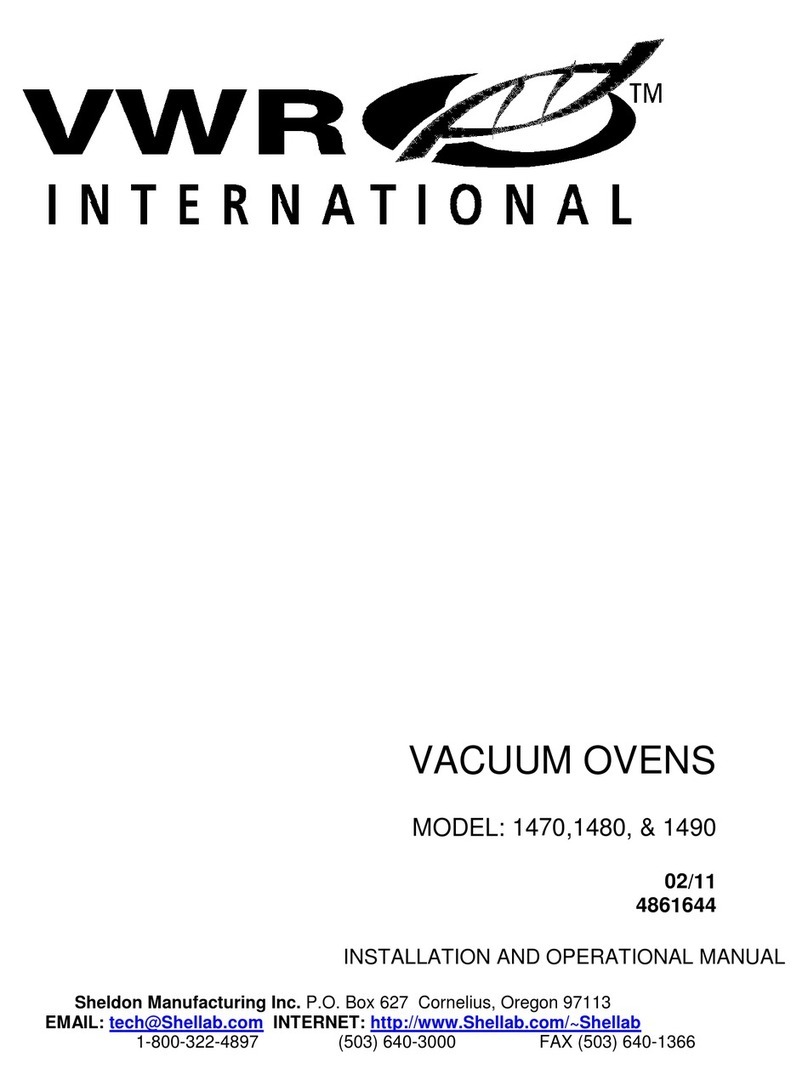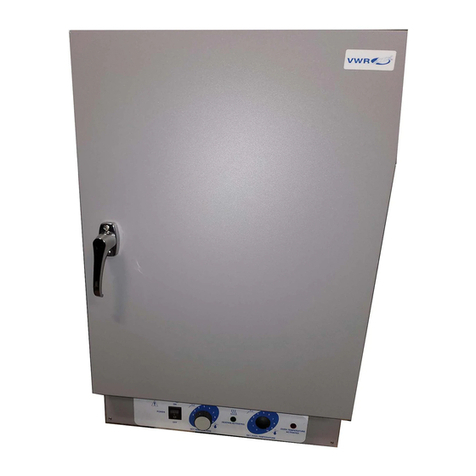
5
INSTALLATION (See Figure One)
Local city, county or other ordinances may govern the use of this equipment. If you
have any questions about local requirements, please contact the appropriate local
agency. Installation may be performed by the end user.
Under normal circumstances this unit is intended for use indoors, at room temperatures
between 5°and 40°C, at no greater than 80% Relative Humidity (at 25°C) and with a
supply voltage that does not vary by more than 10%. Customer service should be
contacted for operating conditions outside of these limits.
3.1 Power Source: The electrical supply circuit to the oven must conform to all
national and local electrical codes. Consult the oven’s serial data plate for the
voltage, and ampere requirements before making connection. VOLTAGE
SHOULD NOT VARY MORE THAN 10% FROM THE SERIAL PLATE RATING.
This unit is intended for 50/60 Hz application. A separate circuit is recommended
to prevent possible loss of product due to overloading or failure of other
equipment on the same circuit.
3.2 Location: When selecting a site for the oven, consider all conditions which may
affect performance, such as extreme heat from steam radiators, stoves, ovens,
autoclaves, etc. Avoid direct sun, fast-moving air currents, heating/cooling ducts,
and high traffic areas. To ensure air circulation around the unit allow a minimum
of 30 cm between the unit and walls or partitions which might obstruct free
airflow.
3.3 Lifting / Handling: These units are heavy and care should be taken to use
appropriate lifting devices that are sufficiently rated for these loads. Units should
only be lifted from their bottom surfaces. Doors, handles and knobs are not
adequate for lifting or stabilization. The unit should be completely restrained
from tipping during lifting or transport. All moving parts, such as shelves and
trays should be removed and doors need to be positively locked in the closed
position during transfer to prevent shifting and damage.
3.4 Leveling: The unit must sit level and solidly. The Model 1410 has four rubber
feet that are already attached to the unit and are not adjustable. Leveling feet
are supplied with Model 1430 and must be installed in the four holes in the
bottom corners of the unit. With the unit standing upright, turn the leveling feet
counterclockwise to raise the level of that corner. Adjust the leveling foot at each
Section


































